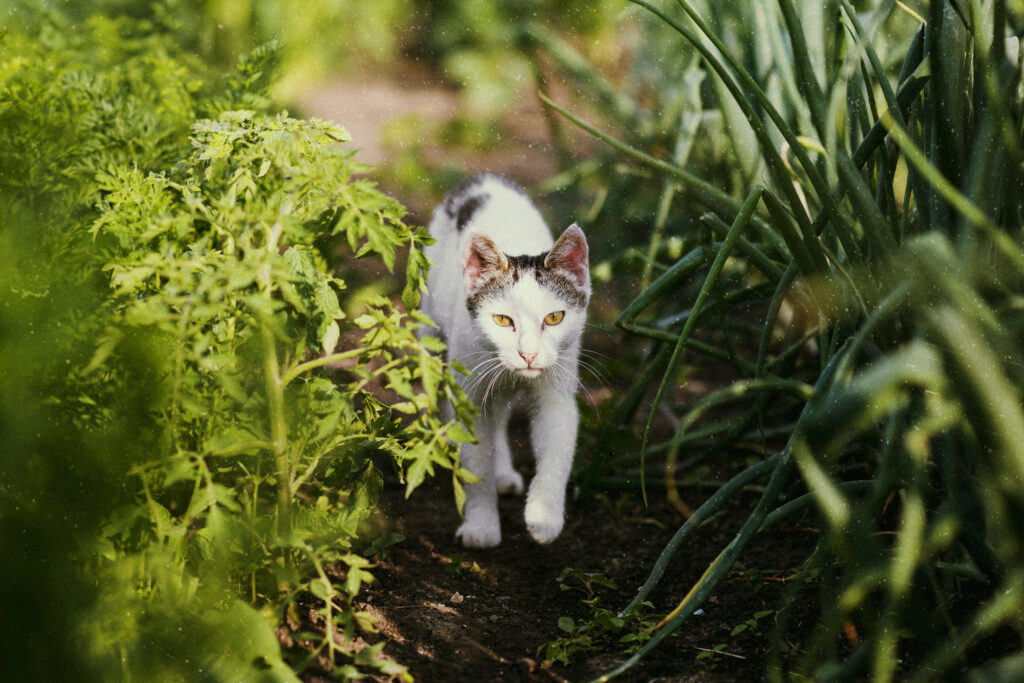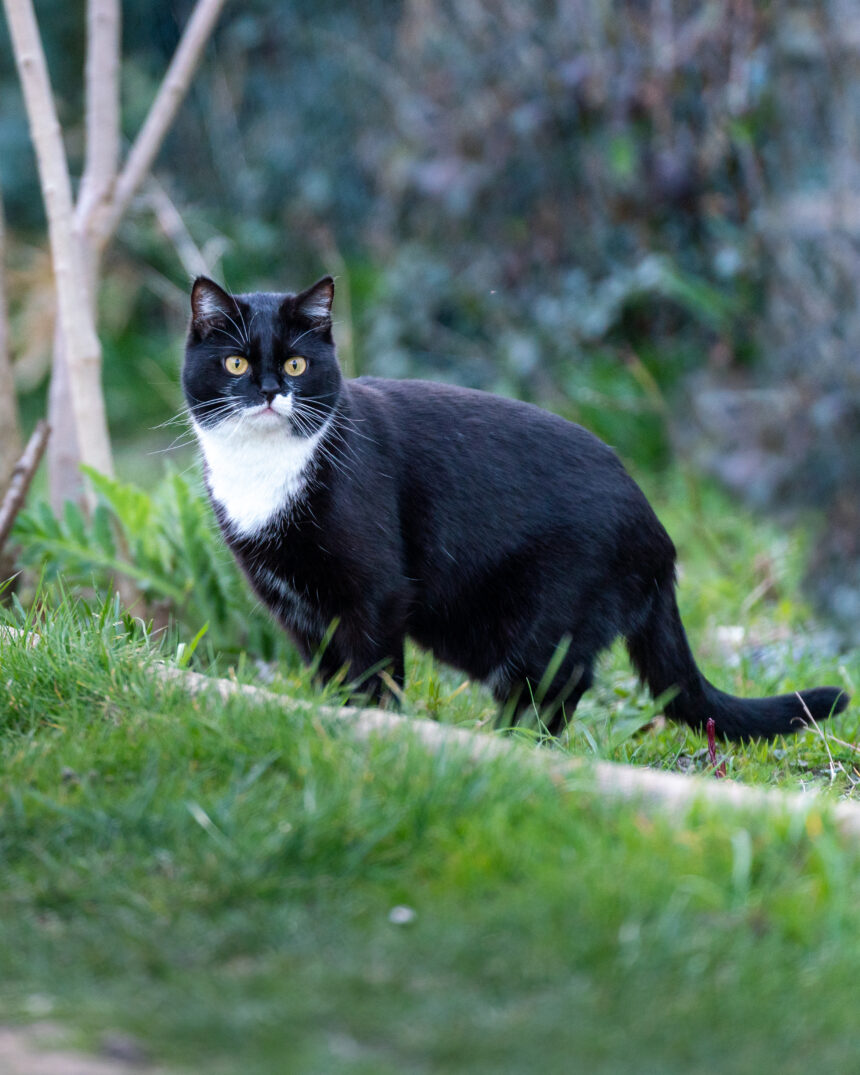In ecosystems around the world, the once-perceived “cute and harmless” feral cat has been implicated in the rapid decline of native animal populations. For decades, experts have suspected that feral cats play a pivotal role in decimating biodiversity, but only recently has hard scientific evidence—specifically DNA analysis—provided irrefutable proof of their lethal impact. New studies have shown that feral cats are responsible for killing millions of native animals, leading to a crisis in conservation efforts. This article explores the disturbing truth behind feral cat predation and its consequences for native wildlife, and examines the role of DNA evidence in revealing the cats’ deadly role.
The Feral Cat Menace

Feral cats (Felis catus) are domestic cats that have reverted to the wild, either by birth or abandonment. They have become a widespread and invasive species in many countries, particularly in Australia, New Zealand, and parts of the United States. Though domestic cats are generally seen as benign house pets, feral cats are a significant threat to biodiversity. They are natural-born hunters, with an innate predatory instinct that they carry into the wild.
Feral cats hunt a wide variety of prey, including small mammals, birds, reptiles, and insects. According to recent studies, it is estimated that feral cats kill billions of animals each year. This includes species that are already vulnerable or endangered, pushing them closer to the brink of extinction. In countries like Australia, where many unique species evolved without natural predators, the arrival of feral cats has been devastating for native fauna.
DNA Evidence: Unveiling the Killer
Historically, the role of feral cats in wildlife mortality has been inferred from ecological studies, but it has been difficult to track and confirm cat-induced deaths on a large scale. That is, until DNA analysis became a powerful tool for wildlife researchers.
DNA-based research has allowed scientists to identify the species of animals found in the stomachs or scat of feral cats, definitively proving that these cats are not only preying on native species but also regularly consuming endangered animals. In one such groundbreaking study, conducted by the University of Sydney, researchers collected cat scats (feces) from feral cat populations in Australia and analyzed the DNA present in them.
The study revealed the devastating truth: feral cats were responsible for the deaths of several species, some of which were already critically endangered, such as the western ground parrot and the bilby, a small marsupial. By sequencing the DNA of the animals found in the scats, researchers were able to identify exactly which species were being killed by the cats.
Explain with example

For example, the genetic material from several bird species, including the threatened orange-bellied parrot, was found in the feces of feral cats, highlighting the direct link between the predators and the alarming decline of these species. The DNA analysis also helped pinpoint where these predation events were taking place, offering a clearer picture of the regions most at risk.
DNA evidence has also shown that feral cats are opportunistic predators, often targeting animals that are easy to catch, such as small marsupials, ground-dwelling birds, and even reptiles. Their hunting practices are particularly lethal in areas where native species have not evolved defenses against such predators. The DNA studies have confirmed what many conservationists feared—that these cats are the primary cause of many species’ disappearance from the wild.
Ecological Consequences
The impact of feral cats on native wildlife extends beyond just the loss of individual animals; it affects entire ecosystems. When native species are eliminated from an ecosystem, there can be cascading effects on other plants and animals. The disappearance of small herbivores or seed-eating birds, for example, can alter plant growth patterns and soil composition, which in turn affects the entire food web.
The loss of top predators like native birds of prey and the destruction of habitats by predation also weakens ecosystem resilience. Feral cats contribute to these disruptions by not only preying on native animals but also competing with native carnivores for food sources. This competition places additional stress on already struggling species, further accelerating their decline.
In some cases, the cats’ hunting behavior has even changed the physical landscape. For instance, in areas where feral cats are most prevalent, the decline of ground-nesting birds has led to an overgrowth of certain plant species that would have otherwise been kept in check by those birds. This phenomenon illustrates just how interconnected species are in a balanced ecosystem, and how the removal of one species—due to the predation of feral cats—can lead to profound and lasting ecological changes.
Conservation Efforts and Management
In response to the growing evidence linking feral cats to the destruction of native wildlife, many governments and conservation organizations have ramped up efforts to manage cat populations. Australia, in particular, has become a battleground for feral cat management, as the country is home to many species found nowhere else on Earth.
The Australian government has introduced a range of strategies, from large-scale culling programs to the creation of feral cat-free zones, where native species can recover in safety. While these measures have been controversial, with critics arguing that culling is inhumane, they have proven effective in reducing the number of cats and the resulting predation of vulnerable species. In addition to culling, there have been increased efforts to trap, sterilize, and rehome stray cats in urban and rural areas, preventing them from becoming feral in the first place.
At the same time, researchers have also been exploring alternative solutions to mitigate the impact of feral cats on wildlife. One innovative approach is the creation of “cat-friendly” habitats, such as fenced areas where endangered species can roam freely without the threat of predation. These enclosures allow species like the bilby and the numbat to be reintroduced into the wild, where they can repopulate in a safer environment.
Another promising development is the use of genetic tools to selectively target and manage feral cat populations. Researchers are investigating the possibility of using gene drives or immunocontraceptive methods to reduce feral cat numbers without resorting to lethal methods. These approaches, while still in their early stages, offer hope for a more humane and sustainable solution to the feral cat crisis.
A Growing Crisis
The growing body of scientific evidence underscores the fact that feral cats are not just a nuisance but a significant threat to global biodiversity. The impact of these predators is particularly devastating for countries like Australia, which is home to some of the world’s most unique and vulnerable species. The use of DNA analysis has been a game-changer in understanding the scale and scope of this threat, and it continues to shape the conservation strategies employed by experts around the world.
To protect native wildlife, it is crucial that we continue to invest in research, conservation efforts, and the development of innovative solutions to manage feral cat populations. The survival of countless species depends on our ability to address this ecological crisis head-on, and with the power of DNA analysis, we now have a clearer picture of the feral cat’s role in the ongoing loss of biodiversity. Only through concerted global efforts can we hope to mitigate the damage caused by this silent killer and secure a future for the planet’s most endangered species.
In the battle to protect native wildlife, every piece of evidence—whether it’s from a cat’s scat or the remains of a lost species—brings us one step closer to a solution.





